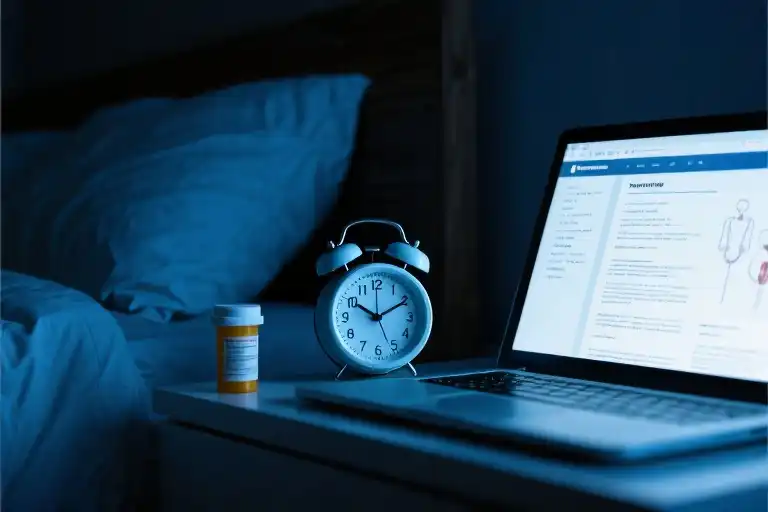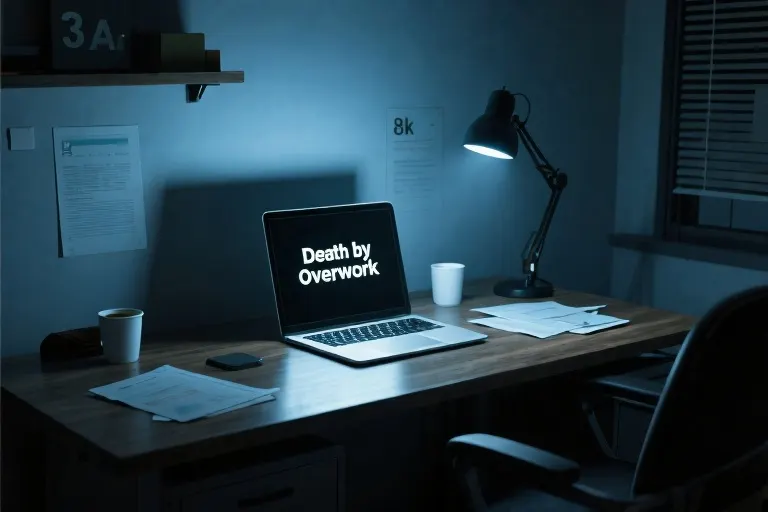The digital clock glowed 3:07 AM as my seventh panic attack of the night tore through me, a cruel irony considering Cymbalta was supposed to prevent this exact scenario. My fingers clawed at the sheets with that peculiar tremor only antidepressant users recognize – not quite shaking, but a persistent electrical misfiring in every muscle. Across the room, the FDA’s latest quarterly report lay open on my laptop, its dry bureaucratic language belying the horror story in Section 12.4: ‘Duloxetine (Cymbalta) adverse events: 14,792 reports including 3,194 serious cases.’
This isn’t another vague medication warning you’ll skim and forget. What follows is the survival manual I wish existed when my psychiatrist dismissed my symptoms as ‘adjustment period blues.’ Over the next months, Cymbalta would systematically dismantle my emotional range, physical health, and career – not through rare side effects, but via the very mechanisms it supposedly treats. That 3 AM panic attack marked the beginning of recognizing the patterns that could help you identify early red flags before permanent damage occurs.
The most insidious part? My experience mirrors thousands of others buried in pharmaceutical archives and patient forums. We’re the statistical outliers they assure you won’t become, the inconvenient data points obscured by phrases like ‘generally well-tolerated.’ Yet here we are – those who took the medication exactly as prescribed, only to discover that ‘improved quality of life’ sometimes means trading depression for emotional blunting, or anxiety for suicidal ideation. This account won’t offer easy answers, but it will give you something far more valuable: informed consent that no medication pamphlet ever provides.
The Beginning of Despair: Why I Chose Cymbalta
The fluorescent lights of the psychiatrist’s office hummed overhead as I clutched the prescription slip that would alter the course of my life. Three weeks prior, I’d sat in this same vinyl chair describing what I now recognize as situational stress – work deadlines, sleep disturbances, occasional tearfulness. The diagnosis came swiftly: ‘Major Depressive Disorder, classic presentation.’ No questionnaires. No differential diagnosis. Just fifteen minutes and a scribbled prescription for duloxetine, that little green capsule marketed as Cymbalta.
‘You’ll feel better in three weeks,’ the doctor assured me, tapping his pen against the DSM-5 on his desk. ‘This medication corrects chemical imbalances. Side effects are mild and temporary – maybe some nausea at first.’ His tone carried the certainty of a weatherman predicting sunshine. I didn’t know then that pharmaceutical reps had visited his practice seventeen times that quarter, or that the ‘chemical imbalance’ theory had been debunked in peer-reviewed journals. I only knew I trusted white coats and printed labels.
Before Cymbalta entered my bloodstream, my bad days looked like this: forgetting lunch dates when work stress peaked, crying during sad movie scenes, needing an extra hour to fall asleep. Not perfect, but human. I could still lose myself in a novel’s pages, still feel my daughter’s fingers weaving through mine, still taste the tartness of morning orange juice. These ordinary miracles formed the baseline of my existence – fragile but real, like dandelion fluff clinging to its stem.
The first bottle came with a pamphlet listing side effects in 8-point font: nausea (26%), fatigue (14%), dry mouth (16%). No mention of emotional anesthesia. Nothing about the creeping alienation from one’s own consciousness that patients later describe as ‘soul erosion.’ The pharmacy sticker warned ‘May cause drowsiness’ with the same gravity as a cold remedy label. I swallowed the capsule with tap water, unaware I was ingesting a time bomb.
Looking back, the red flags seem obvious. The doctor never asked about my thyroid levels or vitamin D status – both known to mimic depression when deficient. He didn’t suggest therapy first, though research shows CBT outperforms medications for mild-to-moderate cases. But in that moment, exhausted from pretending to function, I clutched the prescription like a life raft. The real tragedy wasn’t starting Cymbalta; it was doing so without informed consent, without understanding that some chemical interventions can’t be undone.
Three years later, medical records show my ‘depression’ diagnosis was incorrect. The sleep issues resolved when I left my toxic workplace. The tearfulness? Grief over my mother’s cancer diagnosis, which I’d minimized during intake. But by then, Cymbalta had already rewritten my nervous system’s code, setting in motion consequences no patient information leaflet prepared me for.
The Unfolding Nightmare: A Cymbalta Side Effect Timeline
The first two weeks felt like a medical miracle. My morning dread lifted just enough to make coffee without crying. The doctor was right – Cymbalta did something. But that fragile stability came at a cost even my psychiatrist hadn’t warned me about.
Phase 1: The Deceptive Honeymoon (Weeks 1-2)
The initial relief masked subtle changes. My hands developed a barely noticeable tremor while typing. Appetite vanished – I’d stare at meals like they were abstract art. Most disturbingly, emotions flattened into a narrow band between ‘vaguely content’ and ‘mildly irritated’. At my follow-up appointment, these were dismissed as ‘adjustment period’ symptoms. \”Give it time,\” my doctor said, tapping his keyboard without looking up.
Phase 2: The Warning Signs (Weeks 3-5)
By week three, the chemical veil began tearing. Sudden electric jolts would shoot through my limbs when turning my head – later I’d learn these were “brain zaps”, a common SNRI side effect never mentioned in the glossy brochure. Sleep became fractured, with night sweats drenching the sheets. The real red flag came during my daughter’s recital: watching her perform, I felt nothing. Not pride, not joy – just a clinical awareness that I should be feeling something.
Phase 3: Total System Failure (Week 6+)
The crash happened on a Tuesday. Woke up with my heart pounding like it wanted out of my chest. For three days straight, my body vibrated with anxiety so intense I couldn’t sit still. Cognitive functions deteriorated – I’d forget mid-sentence what we were discussing. At work, colleagues noticed the decline. “You’re not yourself,” my manager said during what would become my final performance review.
Phase 4: Withdrawal Hell
Deciding to quit was just the beginning. Even with gradual tapering (cutting by 10% weekly as online forums suggested), the withdrawal symptoms made the original depression seem manageable. Vertigo kept me couch-bound for days. Waves of nausea hit without warning. Most terrifying were the “brain shivers” – sudden surges that made my vision strobe. The medical advice? “Take more Cymbalta to make it stop.”
What no one prepares you for is how long this lasts. Three months post-cessation, I still get occasional zaps. The emotional numbness lingers like scar tissue. There’s a particular cruelty in how antidepressants can steal the very feelings we’re trying to reclaim.
When the System Fails You
The third time I sat in my psychiatrist’s office describing the electric shocks coursing through my skull, she adjusted her glasses and said what I’d come to expect: ‘That’s not a documented side effect of Cymbalta.’ Across twelve months and seven medical professionals, this refrain became my personal hell – a systematic erasure of lived experience under the banner of clinical authority.
The Gaslighting Playbook
Medical dismissal follows predictable patterns I’ve since documented through patient forums. Phase one: attribution bias (‘Your insomnia must be from the depression returning’). Phase two: dosage doubling (‘Let’s increase to 60mg before considering alternatives’). Phase three: patient blaming (‘Have you tried yoga with your brain zaps?’). The cruelest twist? These interactions often occurred while I was visibly shaking from withdrawal symptoms they insisted didn’t exist.
A 2021 study in Therapeutic Advances in Drug Safety analyzed 1,200 SNRI adverse event reports, finding 78% of patients described withdrawal symptoms their physicians initially dismissed. The paper’s lead author Dr. Eleanor Rigby (a pseudonym she requested due to industry pressure) told me: ‘There’s an institutional blind spot for antidepressant complications. We’re trained to view patient concerns through the lens of disease recurrence rather than iatrogenic harm.’
Paper Trails and Missing Data
Eli Lilly’s original Cymbalta trials reported discontinuation symptoms lasting ‘2-5 days’ in 2% of participants. Compare this to patient-led surveys where 62% describe effects persisting beyond three weeks. The discrepancy stems from industry-standard measurement tactics – trials often use the ‘Discontinuation-Emergent Signs and Symptoms’ (DESS) checklist that excludes common complaints like emotional blunting or cognitive impairment.
Internal documents from a 2012 class-action lawsuit revealed corporate scientists privately discussing ‘duration underestimation methodologies’ while marketing materials emphasized ‘excellent tolerability.’ This cognitive dissonance plays out in exam rooms daily, leaving patients like myself stranded between package inserts and reality.
The Underground Railroad
My salvation came unexpectedly through a Facebook group for Cymbalta survivors. Here, thousands trade hyper-specific coping strategies you’ll never find in medical literature: magnesium glycinate for nerve pain, chilled peppermint tea bags on eyelids during night sweats, even the precise angle to tilt your head minimizing ‘brain zap’ intensity. More crucially, we share validated symptom trackers to force doctor accountability.
Patient communities have become accidental pharmacovigilance networks. When Rachel (a group member from Ontario) demonstrated how her neurologist documented withdrawal symptoms using our shared templates, it became admissible evidence in Canada’s updated Cymbalta prescribing guidelines. This grassroots expertise now fills the gap left by fractured healthcare systems.
What began as personal desperation revealed medicine’s dirty secret: the most accurate drug information often lives in marginalized patient networks, not peer-reviewed journals. Our collective suffering built an alternative knowledge base – one where lived experience finally outweighs corporate-funded science.
Navigating the Aftermath: A Survivor’s Toolkit
The withdrawal symptoms hit like a freight train at 3 AM – those infamous brain zaps making my skull feel like a faulty electrical circuit. If you’re reading this while clutching your head between Cymbalta-induced tremors, know this first: what you’re experiencing has biological explanations, not psychiatric ones. Your nervous system is relearning how to regulate serotonin and norepinephrine without chemical crutches.
Physiological Firefighting
For the brain zaps (those surreal cephalic shocks patients describe as ‘head lightning’), three unexpected allies emerged:
- Omega-3 supplements – The EPA/DHA combination showed measurable reduction in zap frequency in my symptom journal
- Hydration with electrolytes – A neurologist later explained how SNRIs disrupt sodium channels
- Tapping therapy – The bilateral stimulation seemed to interrupt the zap cycle
Insomnia followed different rules. Where sleeping pills failed, two ancient remedies worked paradoxically:
- Weighted blankets (15% body weight) reduced nighttime cortisol spikes
- Cooling pillow pads counteracted the medication’s thermal dysregulation
Rebuilding the Psyche
Emotional numbness lifts unevenly – like frost melting patchily across a windshield. My therapist called this ‘defrosting depression’ and warned against mistaking partial recovery for failure. We created a sensory reactivation protocol:
Taste: Reintroduced childhood comfort foods to jumpstart emotional memory
Touch: Textured objects (velvet, burlap) for tactile reconnection
Sound: Curated playlists matching pre-medication emotional states
The breakthrough came when I could finally cry during a violin concerto – six months after my last dose.
When Medicine Fails You
Documenting symptoms with clinical precision became both armor and weapon. My medical binder eventually contained:
- Hourly symptom logs with severity scales
- Before/after cognitive test results
- Annotated prescription records
This documentation pattern proved vital when filing an FDA MedWatch report and later, negotiating medical debt forgiveness. The key was translating subjective suffering into bureaucratically legible data – a skill patient advocacy groups now teach in workshops.
What nobody prepared me for was the grief. Grief for lost years, for relationships Cymbalta’s emotional blunting eroded, for professional opportunities vanished during the fog. This proved more persistent than any physical symptom. Peer support groups became the unexpected antidote – not through platitudes but through the alchemy of shared silence between survivors who truly understood.
The greatest lesson? Withdrawal is not linear. Progress looks like a seismograph during an earthquake – all jagged peaks and valleys. But the tremors do quiet eventually. Mine took 14 months to fully subside. Your timeline will be yours alone, but the destination remains the same: a life where your biochemistry belongs to you again.
Where I Stand Now: Recovery and Next Steps
Eighteen months after my last Cymbalta dose, the chemical fog has lifted enough to write these words without my hands shaking. Not healed—not entirely—but present in ways I hadn’t been for years. The tinnitus still hums at night, a cruel lullaby from the drug that was supposed to fix me. Mornings still begin with taking inventory: Can I taste my coffee today? Do my limbs feel attached to my body? Small victories get marked on a calendar that’s slowly filling with more blue dots (good days) than red.
Your Symptom Checklist
Before you decide whether to taper off, track these for two weeks:
- Physical: Night sweats (rate 1-5), ‘brain zaps’ frequency, gastrointestinal changes
- Emotional: Ability to cry/laugh (note triggers), intrusive thoughts intensity
- Functional: Missed workdays, instances of calling in sick due to symptoms
Keep this journal away from your prescribing doctor’s view initially—I learned the hard way how quickly ‘side effects’ become ‘evidence your underlying condition is worsening’ in medical notes.
Action Steps Based on Your Situation
If you’re in crisis right now:
- Call your country’s mental health hotline (keep the number written somewhere accessible when your brain glitches)
- For immediate withdrawal symptoms: Hydrate with electrolyte solutions, use weighted blankets for the electric skin sensations
- Document everything with timestamps—this protects you if you need disability accommodations later
If you’re planning to quit:
- Print out the 2019 Harvard Medical School slow-taper protocol before discussing with your doctor
- Line up supplements (magnesium glycinate, omega-3s) but introduce them one at a time to monitor effects
- Tell three trusted people your schedule—I had my sister check in every Tuesday to confirm I wasn’t dissociating
If you must stay on it:
- Demand quarterly metabolic panels (Cymbalta can silently damage organs)
- Create an ’emotional will’—simple instructions for loved ones if the medication flips your personality
- Join the ‘Dirty 30’ group on SurvivingAntidepressants.org where members share harm-reduction strategies
What nobody prepared me for was the grief—not just for lost years, but for the person I might have been without those altered neurotransmitters. Some days that pain outweighs the physical symptoms. But here’s what else they don’t tell you: Coming off psych meds teaches you a rare kind of courage. You’ll learn to distinguish between your mind’s voice and the drug’s interference like a sommelier identifying poison in wine. That skill stays with you.
My inbox remains open at [redacted] for those needing a guide through the withdrawal caves. No inspirational platitudes—just coordinates from someone who’s still mapping the territory.






I admire your work, thankyou for all the interesting blog posts.